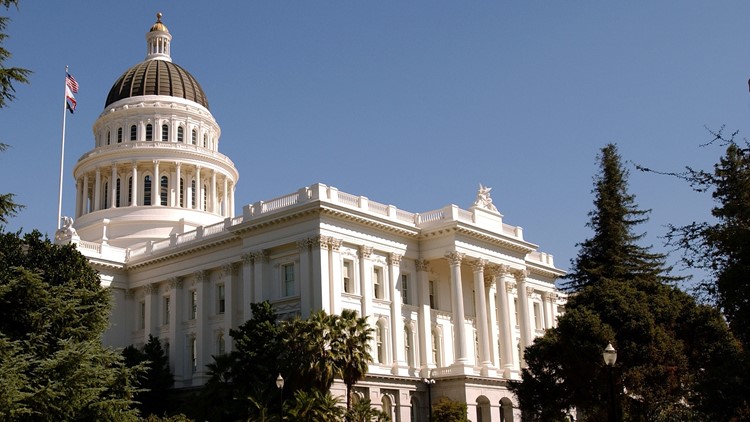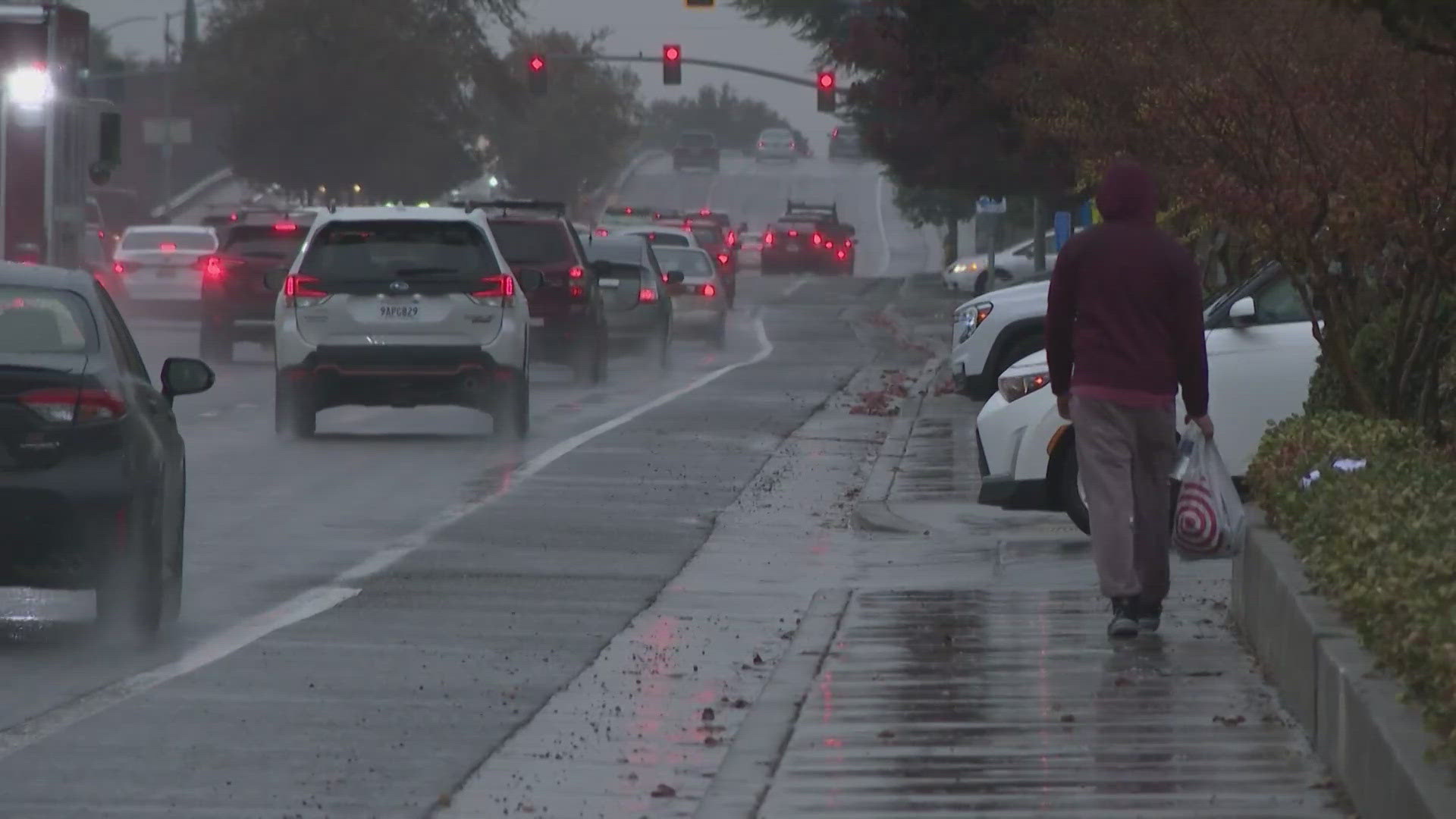If you're viewing on the ABC10 App, tap here for multimedia.
While the California government cites ecological issues, local governments and farmers counter with economic concern. Both are sides of a continuing controversy over California's water supply.
The State Water Resources Control Board is updating its water quality control plan for the Bay Delta, citing environmental concerns and outdated objectives.
However, the plan's flow objectives have been a topic of concern for farmers, water agencies, and local governments that put the flows to agricultural use in their region.
Public interest in the issue has generated a rally at the California State Capitol building to oppose the proposal that some believe could devastate economies and that others claim could help the Bay Delta during an ecological crisis.
While there are many elements to the conversation, here are some key terms all sides have been discussing. Steve Boyd, Turlock Irrigation District Director of Water Resources and Regulatory Affairs, and the Les Grober, State Water Board's Environmental Program Manager, help us break things down.
Government
State Water Resources Control Board - This government board handles water quality and water rights in California.
The Bay Delta -This is a geographic area defined by an area that gets inflow from the Sacramento River from the north and San Joaquin River from the south. The rivers converge into the Delta region. This interconnected network of channels eventually goes out to the Bay and then to the ocean.
If flows are low, salt water can come in from the western side. When flows are high, it pushes the salt water out.
Water Right - All water in the State of California belongs to the people of the State of California. A water right, according to Grober, is a right to beneficially and reasonably use water.
On the Tuolumne River, both the Turlock Irrigation District and Modesto Irrigation District have senior water rights. If the state proceeds with the Substitute Environmental Document [SED], Boyd says the situation could lead to water right hearings.
Substitute Environmental Document [SED] proposal - The State Water Board is attempting to update the Water Quality Control Plan. It’s been 20 years since there was update, with the exception of a minor update in 2006.
The SED does all of the California Environmental Quality Act analysis to show what the environmental and economic effects would be. By updating lower San Joaquin river flow objectives, there is hope that it will reasonably protect fish and wildlife.
The proposal would require 30 to 50 percent of unimpaired flows from the San Joaquin River's three tributary rivers for wildlife beneficial uses and salinity control. Opponents like Modesto Irrigation District and Turlock Irrigation District have argued that this is a dramatic increase in the amount water currently released to the river for environmental uses.
The Water
San Joaquin River - The Stanislaus River, Tuolumne River, and Merced River are tributaries to the San Joaquin River, which flows into the Bay Delta.
Unimpaired flows - Most water systems are managed; structures like dams impound water for multiple services. Unimpaired flow is a calculation of the amount of water that would come down the river if those dams did not exist.
Water diversions - Most of the water gets diverted for other uses and environmental purposes. With the Tuolumne River and Turlock Irrigation District, water is diverted and stored into the Don Pedro Dam during wet years. During dry years, it is used for the environment and for irrigation.
Twin Tunnels - This project is also known as the California WaterFix and would add a point of diversion in the delta. These diversions would put water in tunnels and then be moved to facilities in the southern Delta.
Grober has stated the Twin Tunnels is not connected with the SED proposal, and that updates to water quality in the Bay Delta preceded the Twin Tunnel proposal.
“It’s something that is separate and started well before,” Grober said.
Critics of the tunnels have addressed that the same amount of flows needed to replenish the Delta after the Twin Tunnels operational is the same amount that would be taken from the San Joaquin River.
“It is interesting to note that the State Board says the need matches how much water they want to move through the Twin Tunnels,” Boyd said.
The Turlock Irrigation District has not taken a formal position on the tunnels project, according to Boyd. However, several leaders in the area have opposed them.
Surface water - Surface water is water that an agency catches in a reservoir and then makes available to others. This is in contrast to groundwater, which is pumped out of the ground.
Groundwater Dependent Community - A groundwater dependent community is a community that generally relies on pumping water from the ground for uses like providing drinking water.
“For the region we serve, nearly all of the drinking water is developed through groundwater,” said Boyd.
Any reduction in surface water that goes to groundwater recharge can have a direct impact on private individuals and municipalities to extract groundwater.
The Fish
Tuolumne River Management Plan [TRMP] - The Tuolumne River Management Plan is the TID [Turlock Irrigation District] response to the SED proposal for improving the fish population. It demonstrates a variety of non-flow measures and increased flow and other means will improve the populations of Chinook Salmon and Steelhead Trout.
Boyd argues that the TRMP does more for the fish populations than the State Water Board’s plan does.
There’s additional elements including water, predation control, and habitat enhancement.
Salmon and steelhead populations - Salmon and steelhead trout have not been doing well in the lower San Joaquin River. Steelhead are protected species and the salmon are a species of concern, according to Boyd.
The argument for the SED proposal is that the increased flows will enhance and protect these species.
Predation - “Over 90 percent of out-migrating juvenile salmon are eaten by non-native predators before they even make it out of the mouth of the Tuolumne in to the San Joaquin,” Boyd said.
Boyd states that almost zero fish are making it out of the Tuolumne River due to predation.
“Before we start talking about other fixes, we need to deal with predation or nothing’s going to make a difference.”
Habitat Restoration - Boyd, speaking on the Tuolumne River in specific, says the district can perform habitat restoration for the fish by filling in deep-run pools, filling in gravel beds, reintroducing more gravel to the river, and enhance the habitat for the fish so they can make it out of the river.
Buzz words/phrases
“Significant but unavoidable” impacts - This phrase comes from the State Water Board that impact, as a result of the SED, will be “significant but unavoidable.”
“No other agency or entity under CEQA [California Environmental Quality Act] could do anything like that. You have to mitigate for your actions…,” Boyd said.
Water grab - The phrase has been used by protestors and water agencies to describe the State Water Board's proposal.
“If this were really about the fish, we ought to be looking at what we can do for the fish. I think fish are a proxy to get at folks who have a predetermined outcome. They want more water flowing the river and more water flowing through the Delta for whatever their personal belief is and why that’s beneficial,” said Boyd.
1,100 fish - A rallying cry for many during public hearings was a claim that the SED proposal would yield about 1,100 fish. The claims were based on a model that the state used.
According to the State Water Board, this is a demonstration of their transparency. They showed their work, presented the results, but they also showed what some of the issues were with the model and what would be useful and not useful information.
“The model can’t really provide the answer because there hasn’t been the type of information it needs to make certain determinations,” Grober said.
The model did, however, produce information on water temperatures and fish. Specifically, that water in the rivers can warm up and be harmful to fish by the time the water reaches the San Joaquin River, but, by adding more flows, this effect can be mitigated.
Flexibility of the proposal - Critics of the proposal have argued that the State Water Board did not listen to their comments. However, the State Water Board is pointing out two ways they did.
“This is for a 30 to 50 percent range of unimpaired flows. That’s a very big range,” Grober said.
The reason for the range, according to Grober, is to allow people to come up with non-flow ways of achieving fish and wildlife protection goals. This could result in a savings in water, but it requires an investment in resources to achieve it.
Grober also claims the range has stayed the same due to listening to all stakeholders, from farmers and environmentalists to fish and wildlife.



